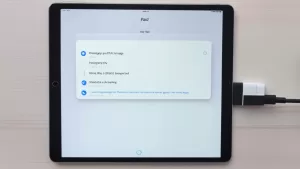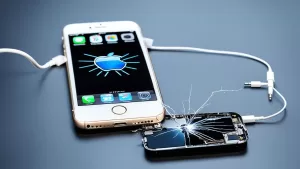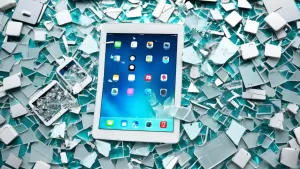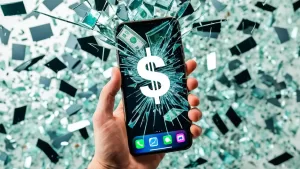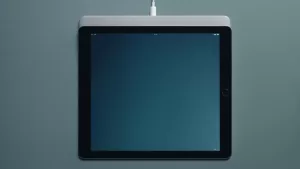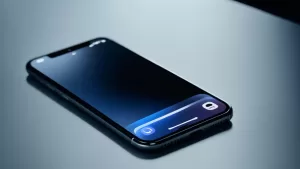Overheating problems usually emerge among other post-update problems in iOS devices. Just like what happened to some iPhone and iPad units following the iOS 13 beta release. In other cases, overheating can be a direct indication of hardware damage particularly a bad battery or other relevant components that had obtained some damage from prior incidents of dropping and/or liquid exposure. There are also some instances that the iPhone heats up normally like when it’s charging, when streaming videos and media files, extensive playing of mobile games and then like. Usually in these cases, the heat on the phone is manageable. However, if it gets to the point when you can no longer get to touch your phone due to the heat, then that’s when you need to act accordingly.
Before anything else, if you are looking for a solution to a different problem, then drop in on our iPhone XS Max Help Guides page for we have already solved some of the most common problems with this device. Try to find issues that are similar to yours and feel free to use our workarounds and solutions.
Troubleshooting iPhone XS Max that is overheating
Before rushing to a service center, it is but recommended to perform some basic troubleshooting procedures just to rule out software-related factors that might have triggered your iPhone to overheat. Lined up below are applicable solutions to a similar issue on the iPhone XS Max that is suddenly overheating. Read on to learn what options to try in order to deal with overheating problem on your iPhone XS Max.
First solution: Clear all background apps then force restart your iPhone XS Max.
Multitasking on your phone requires you to open several apps and leave them opened suspended in the background. Suspended apps are technically on an idle state but they still trigger the processor to work as they continue to run in the background. While keeping apps in this state benefit you in terms of multitasking, they can also trigger some problems to occur at some point. There is a tendency that any of these background apps would crash or get corrupted. And when this happens, the entire system could become adversely affected. With that said, clearing all background apps can be considered as the first possible solution to try on. Here’s how it’s done:
- From the Home screen, swipe your finger up and then pause.
- Swipe either left or right to navigate through your phone’s apps previews.
- Then swipe up on each app preview to close it. Do the same to the remaining background apps.
To completely clear out minor apps and software glitches that might have caused the battery and iPhone processor to become easily exhausted, force restart your iPhone XS Max. Here’s how it’s done:
- Quickly press and release the Volume Up button.
- Quickly press and release the Volume Down button.
- Lastly, press and hold the Side/Power button until the Apple logo appears.
After the reboot process, try to use some features on your phone as you normally do and see if it still heats up so quickly. If the problem persists, move to the next solution.
ALSO READ: How to fix Apple iPhone XS Max audio/no sound problem, cannot hear any sound from iPhone speaker
Second solution: Remove bad apps and services from your iPhone XS Max.
If you have recently installed an app on your iPhone then the overheating issue instigated, a bad app could be the main cause of the problem. It can be an isolated problem to the recently installed app on the phone and therefore will likely be resolved by restricting, if not, deleting that application. You can start by imposing some restrictions to the suspected app first. Just follow these steps:
- From the Home screen, go to Settings.
- Select Screen Time.
- Then tap on Content & Privacy Restrictions.
- Enter your device passcode when prompted to continue.
- Then tap on the Content & Privacy switch.
- Tap on Allowed apps option.
- Tap the switch next to the suspected app to disable it.
Try using your iPhone as you normally do with the suspected app being restricted. If your iPhone doesn’t overheat, then it’s an indication that the suspected application is really the culprit. In that case, you can just delete the app completely with these steps:
- From the Home screen, tap and hold on the icon of the app you wish to be deleted.
- Once it starts to jiggle, tap the X on top of the app icon to delete it.
- Tap Delete to remove the application. Doing so will also delete its data from your phone’s system.
Once you have successfully removed the bad app, restart (soft reset) your iPhone and see if the overheating problem has been resolved.
Third solution: Update your iOS to the latest version available.
iOS update can correct almost all phone issues that are attributed to software errors unless your phone has obtained some sort of liquid or physical damage beforehand. Period software updates released by Apple typically offer bug fixes along with the new features and security enhancements for the receiving device. If you haven’t set your device to auto-update, try to check for any available iOS update via OTA (over-the-air). Make sure that your phone has a stable internet connection, sufficient battery life, and ample memory space to start with. You also need to back-up your important files for safekeeping purposes. Once you are all set, follow these steps:
- Open Settings from your Home screen.
- Select General.
- Then tap Software Update.
An update notification will pop up when there is a new iOS update ready to download and install. Then follow the onscreen instructions to wirelessly update your iOS.
To ensure that all new system changes are properly implemented, reboot (soft reset) your iPhone XS Max after installing the latest software version.
ALSO READ: How to fix apps that won’t update on Apple iPhone XS Max
Fourth solution: Reset all settings on your iPhone XS Max.
Invalid configurations or incorrect settings are also among other possible causes of iPhone overheating. This is often the case if the symptoms started after making changes on the settings of your phone or after installing a new update. And this is where you have to reset all settings on your iPhone. Doing so erases all customized settings including automatic settings overrides from a recently installed update that might have caused conflicts and triggered the processor and battery system to become easily exhausted. To reset all settings on your iPhone Xs Max, simply follow these steps:
- From the Home screen, go to Settings.
- Select General.
- Scroll down to and tap on Reset.
- Then select the Reset all settings option.
- When prompted, enter your device passcode to continue.
- Tap the option to confirm all settings reset.
Your iPhone will reboot automatically after the reset and then loads the default values and original options. To use the features that are disabled by default, you will need to enable them again individually. Then you can use your phone as you normally do and see if the overheating issue has already been resolved.
Fifth solution: Restore your iPhone to its factory default settings. (Master Reset)
If the overheating problem continues after exhausting prior methods, then you must be dealing with some complex system flaws that usually need more advanced solutions. At this point, your next options are a factory reset, a recovery mode restore and DFU mode restore. You can start from a factory reset first to erase your device and restores its factory default settings. This process will also delete all your saved information on the phone memory so make sure you back them up first. Once you’re all set, follow these steps to factory reset your iPhone, wipe out all complex system errors, and set it up as new:
- Open the Settings app from the Home screen.
- Select General.
- Scroll down to and tap Reset.
- Then select Erase all content and settings option.
- Enter your device passcode when asked to continue.
- Then tap the option to confirm factory reset.
After performing a factory reset or master reset, software-related issues that have caused overheating problem on your phone should already be gone. Otherwise, troubleshoot further and try performing a recovery mode restore or DFU mode restore through iTunes. A step-by-step guide on how to carry out a recovery mode restore can be found on this site’s iPhone XS Max tutorials section. The same thing goes for the DFU mode restore.
Is your iPhone XS Max still overheating?
There must be something more than just complex system flaws that caused your device to continue overheating. Since you’ve already ruled out software-related factors, the next factors that you should eliminate are those from within the phone’s hardware system. For proper evaluation of your iPhone’s hardware components, you can take a trip to the nearest Apple service center in your place. A bad battery or other relevant component that’s damaged are usually the triggers.
If your iPhone is still covered by warranty, then you may still be able to avail for new battery replacement or a service warranty, if needed. Talk to your iPhone provider/carrier for further suggestions on how to avail for warranties.
Connect with us
We are committed to helping our readers fix the problems with their phones as well as learn how to properly use their devices. So, if you have other issues, you may visit our Help Guides page so you can check by yourself the articles we’ve already published that contain solutions to common problems. Also, we do create videos to demonstrate how things are done on your phone. Visit our Youtube Channel and please subscribe to it. Thanks.
